The meat packing industry faces many challenges when it comes to ensuring the health and safety of its workers. In fact, there any many potential hazards for meatpackers. From dangerous equipment to the potential presence of hazardous pathogens, there’s a lot to consider when implementing and improving upon worker safety. However, doing so is crucial in order to promote meat packing safety via workplace injury and illness prevention.
Hygienic spiral conveyors that are driven by their side provide 2 primary benefits for meatpackers that help improve occupational safety. Read on to explore them!
 Food-safe, worker safe materials
Food-safe, worker safe materials
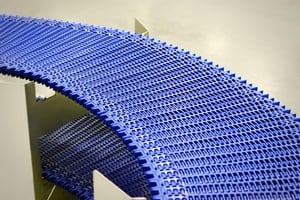 An integral part of the SideDrive hygienic spiral design is the use of food-safe materials. From the USDA-compliant plastic belting to the USDA-compliant Nylatron drive sprocket, these food-safe materials provide a hazard-free, clean environment to work in. Continuous welds and welded standoffs not only eliminate harborage points but also eliminate catchpoints for clothes and body parts.
An integral part of the SideDrive hygienic spiral design is the use of food-safe materials. From the USDA-compliant plastic belting to the USDA-compliant Nylatron drive sprocket, these food-safe materials provide a hazard-free, clean environment to work in. Continuous welds and welded standoffs not only eliminate harborage points but also eliminate catchpoints for clothes and body parts.
Additionally, while metal spiral conveyor belts are prone to wear which results in the presence of small shavings, plastic conveyors are wear resistant. As a result, they do not produce byproducts that are potentially dangerous to workers' health and safety via repeated exposure.
However, SideDrive’s sanitary design doesn’t stop there. Over time, metal conveyor belts are prone to developing sharp edges due to wear. These sharp edges can potentially cut or injure workers. And, in an environment with raw meat products, this danger is further exacerbated by the possible presence of contaminants which can enter through and infect cuts and wounds that happen as a result of sharp edges. Conveyors with plastic belting help prevent these injuries, as they do not sharpen over time and with use, therefore mitigating the safety risks that metal belting presents.
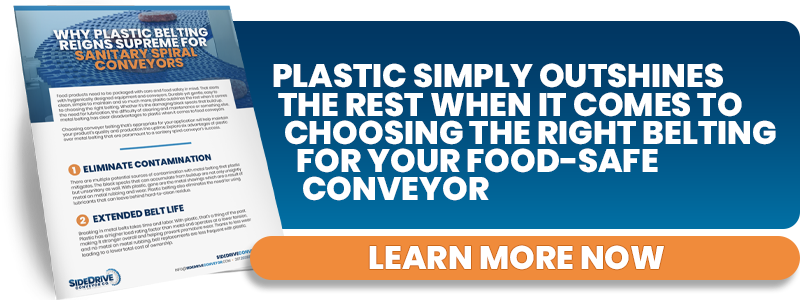
 Open, drumless design
Open, drumless design
Meat workers in the United States are “three times more likely to suffer serious injury than the average American worker.” In fact, according to the Occupational Safety and Health Administration (OSHA), on average, 17 incidents that are classified as “severe” happen each month that involve “hospitalizations, amputations or loss of an eye”.* In order to safeguard meat workers and our nation’s food supply chain, it’s essential to provide safe, open equipment in meatpacking facilities.
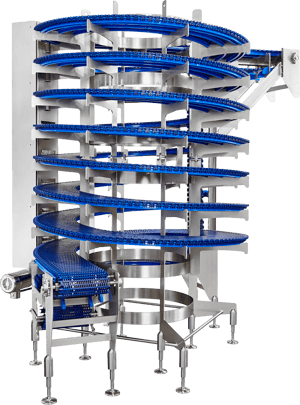 Spiral conveyors with drums are difficult to access for cleaning and are loaded with dangerous catchpoints. SideDrive hygienic spiral conveyors have an open design that allows workers easy access for cleaning, visible inspection and use. It also reduces the number of potentially hazardous catchpoints.
Spiral conveyors with drums are difficult to access for cleaning and are loaded with dangerous catchpoints. SideDrive hygienic spiral conveyors have an open design that allows workers easy access for cleaning, visible inspection and use. It also reduces the number of potentially hazardous catchpoints.
It’s clear that reducing or eliminating these hazards further strengthens the safety program of meatpackers. Although these are just a few of the potential health and safety hazards that meatpackers face, it’s easy to see how SideDrive hygienic spiral conveyors help mitigate them.
SideDrive conveyors don’t just keep your products safe, they keep your workers safe, too.
Contact us to today to explore how hygienic spiral conveyors improve meat worker safety at your facility.

*Source: Guardian News and Media. (2018, July 5). Two amputations a week: The cost of working in a US meat plant. The Guardian. Retrieved May 26, 2022, from https://www.theguardian.com/environment/2018/jul/05/amputations-serious-injuries-us-meat-industry-plant
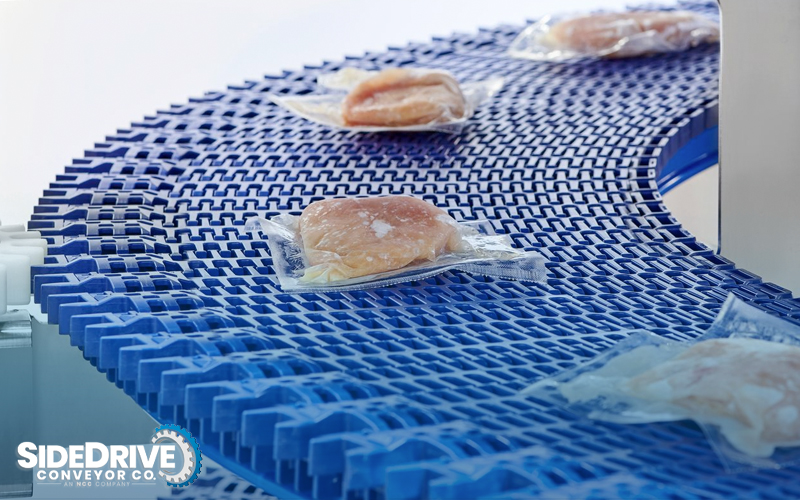
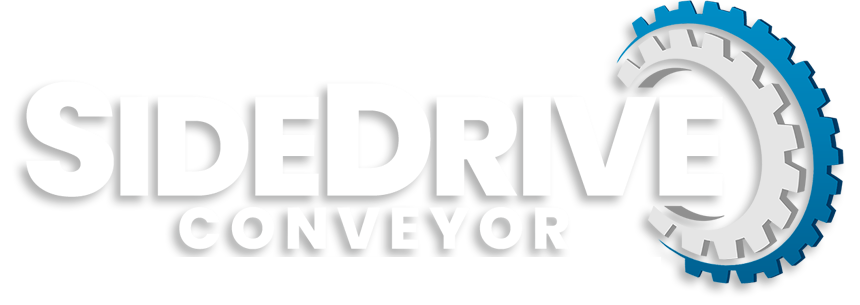

 An integral part of the SideDrive hygienic spiral design is the use of food-safe materials. From the USDA-compliant plastic belting to the USDA-compliant Nylatron drive sprocket, these food-safe materials provide a hazard-free, clean environment to work in. Continuous welds and welded standoffs not only eliminate harborage points but also eliminate catchpoints for clothes and body parts.
An integral part of the SideDrive hygienic spiral design is the use of food-safe materials. From the USDA-compliant plastic belting to the USDA-compliant Nylatron drive sprocket, these food-safe materials provide a hazard-free, clean environment to work in. Continuous welds and welded standoffs not only eliminate harborage points but also eliminate catchpoints for clothes and body parts.
 Spiral conveyors with drums are difficult to access for cleaning and are loaded with dangerous catchpoints. SideDrive hygienic spiral conveyors have an open design that allows workers easy access for cleaning, visible inspection and use. It also reduces the number of potentially hazardous catchpoints.
Spiral conveyors with drums are difficult to access for cleaning and are loaded with dangerous catchpoints. SideDrive hygienic spiral conveyors have an open design that allows workers easy access for cleaning, visible inspection and use. It also reduces the number of potentially hazardous catchpoints.